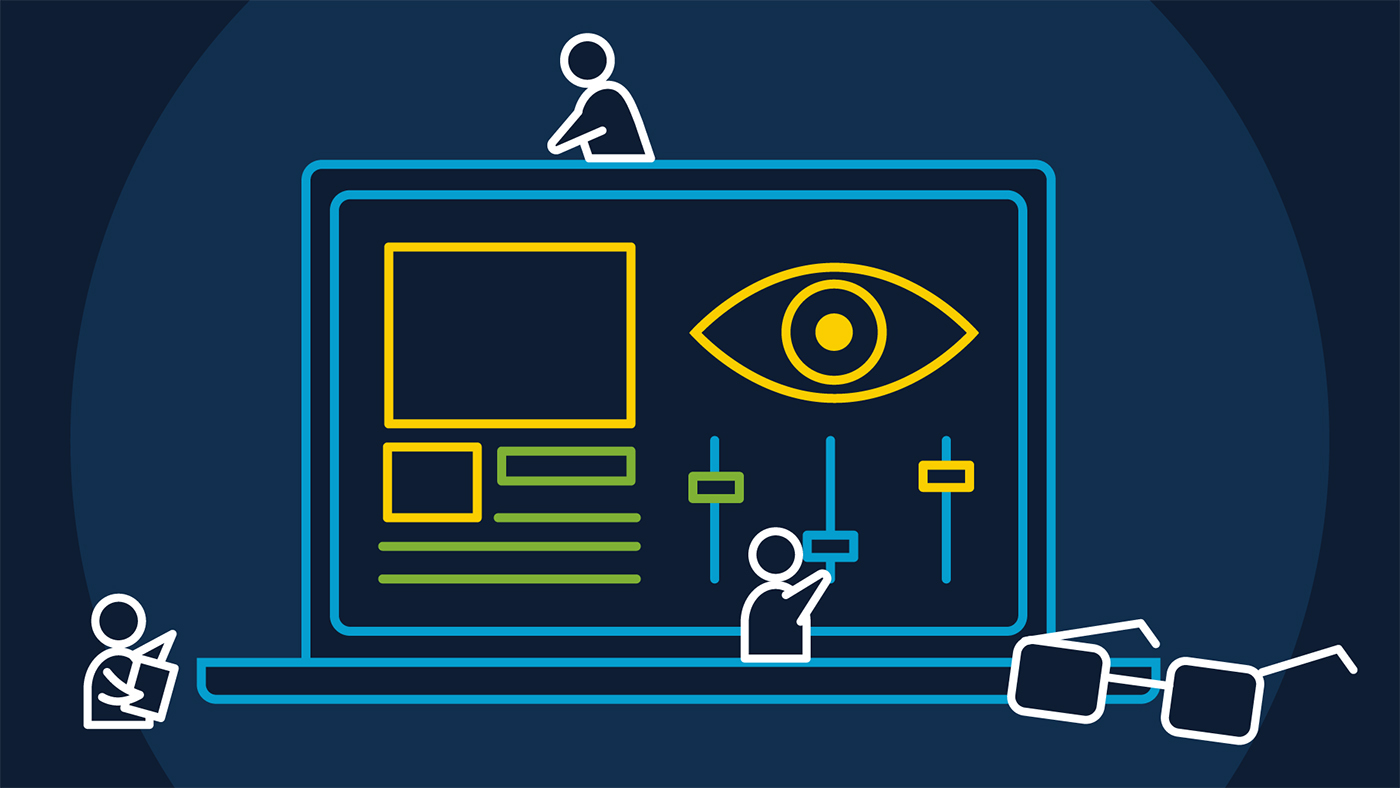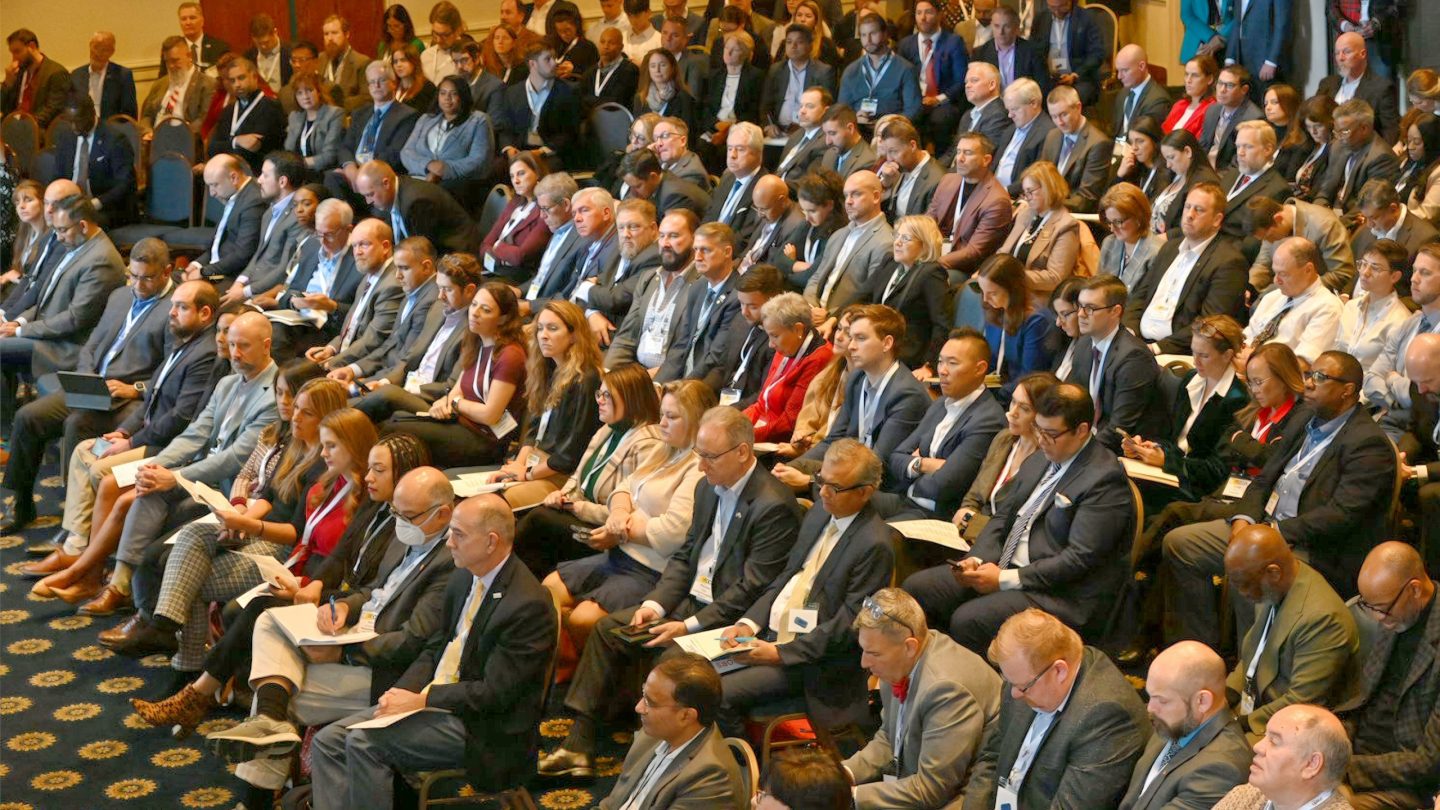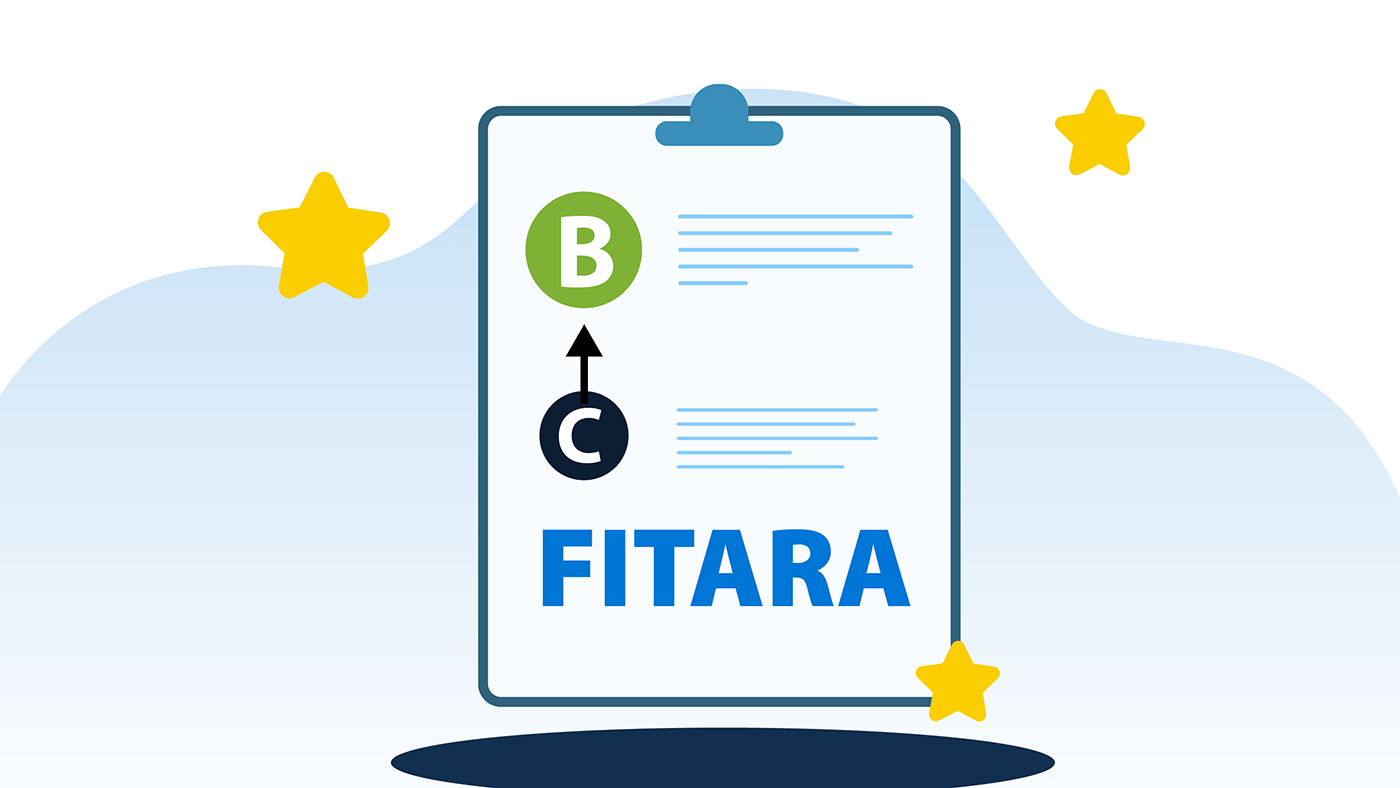Appears In
The Department of Veterans Affairs (VA) Office of Information and Technology (OIT) is taking digital accessibility beyond compliance by working side-by-side with disabled Veterans in the design and development of VA’s digital tools. We subscribe to a bedrock belief that accessibility means inclusivity, and that’s enacted through a central pillar of Our Vision for a Digital Transformation, which aims to achieve “delightful end-user experiences.”
Including disabled Veterans in the modernization of VA.gov
Our Vision document calls on us to “develop Veteran-facing products with their early input, so we can deploy apps and services that are accessible and accomplish what Veterans need.”
We bring this to life through a practice that includes people who use assistive technology as research participants. Assistive technology enables disabled Veterans and their caregivers to use VA.gov in the way that works best for them. This includes assistive technologies like zoom magnification, screen readers, VoiceOver, and keyboard navigation.
In a recent research session conducted by OIT’s Office of the Chief Technology Officer (OCTO), designers learned from a Veteran who experiences migraines as a side effect of traumatic brain injury (TBI) that the VoiceOver screen reader helps him to use his computer when the pain caused by a bright computer screen is too great. While VoiceOver is typically used by someone who is blind or low vision, learning that a Veteran with TBI also takes advantage of this feature illustrates that we cannot predict who will use an accessibility tool.
Having this knowledge early in the design process ensured the navigation on the VA.gov page was as user-friendly as possible for all customers.
A twentyfold increase in assistive technology users
Success stories like the VoiceOver navigation design are driving demand for the participation of assistive technology users in our research process. OCTO increased its database of participants who use assistive technology by more than twentyfold this year. Approximately 12 percent of OCTO’s research sessions involved assistive technology users, and we want to do more. Designers find the input invaluable, especially in the early phases when change can happen more easily. Veterans who participate in the research sessions appreciate the opportunity to make a real impact on what their fellow Veterans will experience on VA.gov.
We recently learned of one case where a Veteran who is blind was using the new mobile patient check-in on her iPhone. Coincidentally, she also found an issue in her VA.gov profile information because it was finally accessible to her. “My next of kin info was really messed up. I was able to fix it. That was good, I didn’t know that info was wrong until now. It was very easy to get in. Everything worked. Very accessible!”
There is a tendency to think of accessibility in terms of physical spaces and devices. But it is vitally important to recognize that accessibility also means access to digital resources. Veterans have a variety of disabilities, including vision, hearing, mobility, and cognition. Technologies such as screen readers, teletype and telecommunications devices, and speech and sound input programs are popular tools in the disabled community.
“Absolutely wonderful” experience
“I find this whole thing absolutely wonderful because we actually get input in how it’s going to work rather than being forced to work within a page that was designed for sighted people,” said a Veteran who is blind and was a participant in a recent research session.
That perspective is vital, case in point. A recent study with assistive technology users involved logging in and two-factor authentication. This activity can be frustrating for a Veteran who is blind because they potentially must move from a desktop computer to a mobile phone—and back again—to complete the process.
In addition, they must then listen to their phone to get the code and then return to the correct spot on their computer to enter it. This back and forth adds to the time and energy spent on a task that a Veteran should be able to accomplish quickly and easily. This revealed the need to increase the time allotted before the verification code expires to reduce stress and frustration for Veterans.
Missions intersect to mutual benefit
Disabled Veterans provide an abundance of insight on the design of digital tools on the modernized VA.gov. This helps us fulfill our mission.
“We have an obligation to make sure that everything we make works for all Veterans,” says OCTO Accessibility Strategist Martha Wilkes. “Veterans are such a giving, mission-driven set of people already. So, when they participate in our user research sessions, they help us make the software better for them. They really feel a sense of additional mission of helping fellow Veterans who also may have disabilities.”
By thinking about accessibility beyond 508 compliance, VA designers and Veterans benefit. Designers learn from Veteran assistive technology users and build that knowledge into digital products that change lives.
VA strives to be a leading example of this kind of innovative thinking, serving our Veterans by putting their needs at the forefront of the VA digital experience. We continuously pursue nothing less than an exceptional customer experience and best-in-class service for the end users of our products and services at VA, as well as the Veterans and caregivers we serve.
If you’re a Veteran or a caregiver, you can sign up to participate in user research sessions and receive compensation for your participation.
View VA’s “Accessibility Begins with You” video. For practical, high-level instruction for ensuring the digital content we create in OIT is accessible and compliant, see the DigitalVA Accessibility Guide.
Topics in this story
In this article
More stories
Link Disclaimer
This page includes links to other websites outside our control and jurisdiction. VA is not responsible for the privacy practices or the content of non-VA Web sites. We encourage you to review the privacy policy or terms and conditions of those sites to fully understand what information is collected and how it is used.






